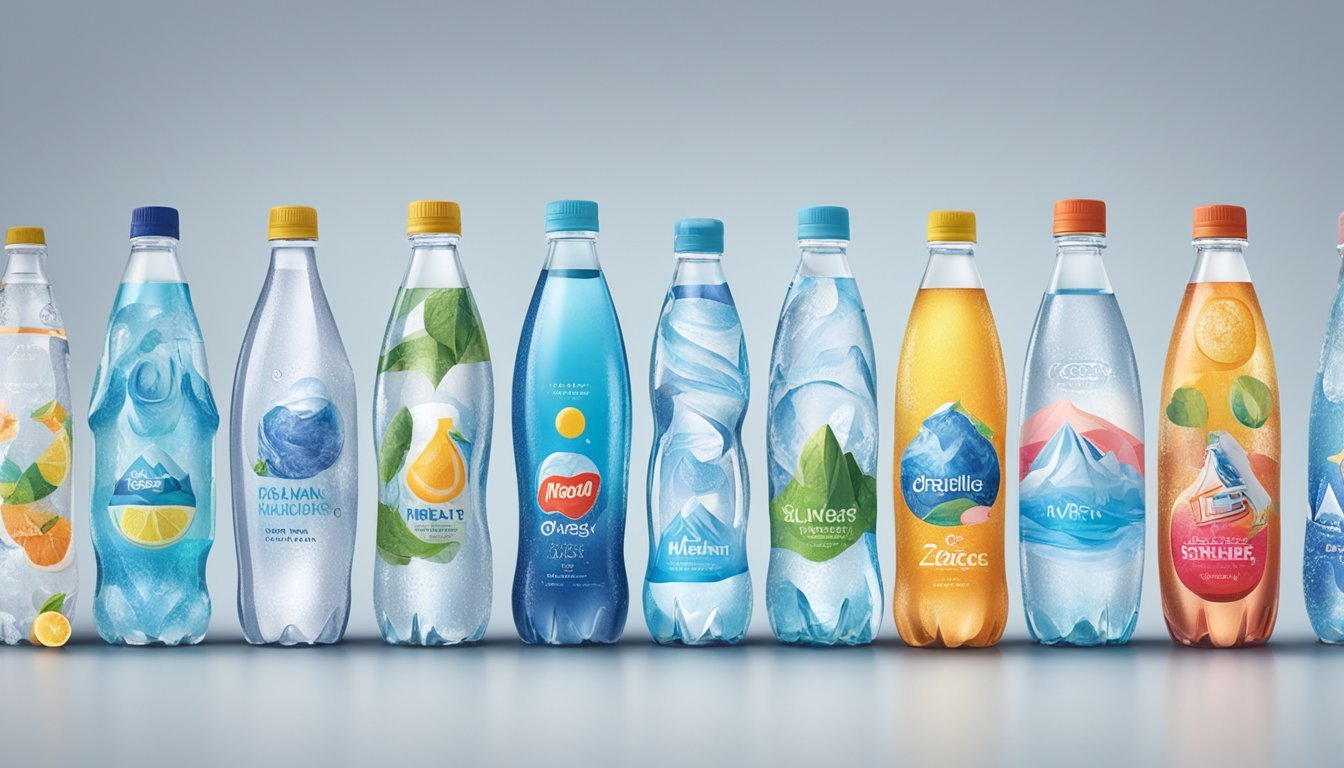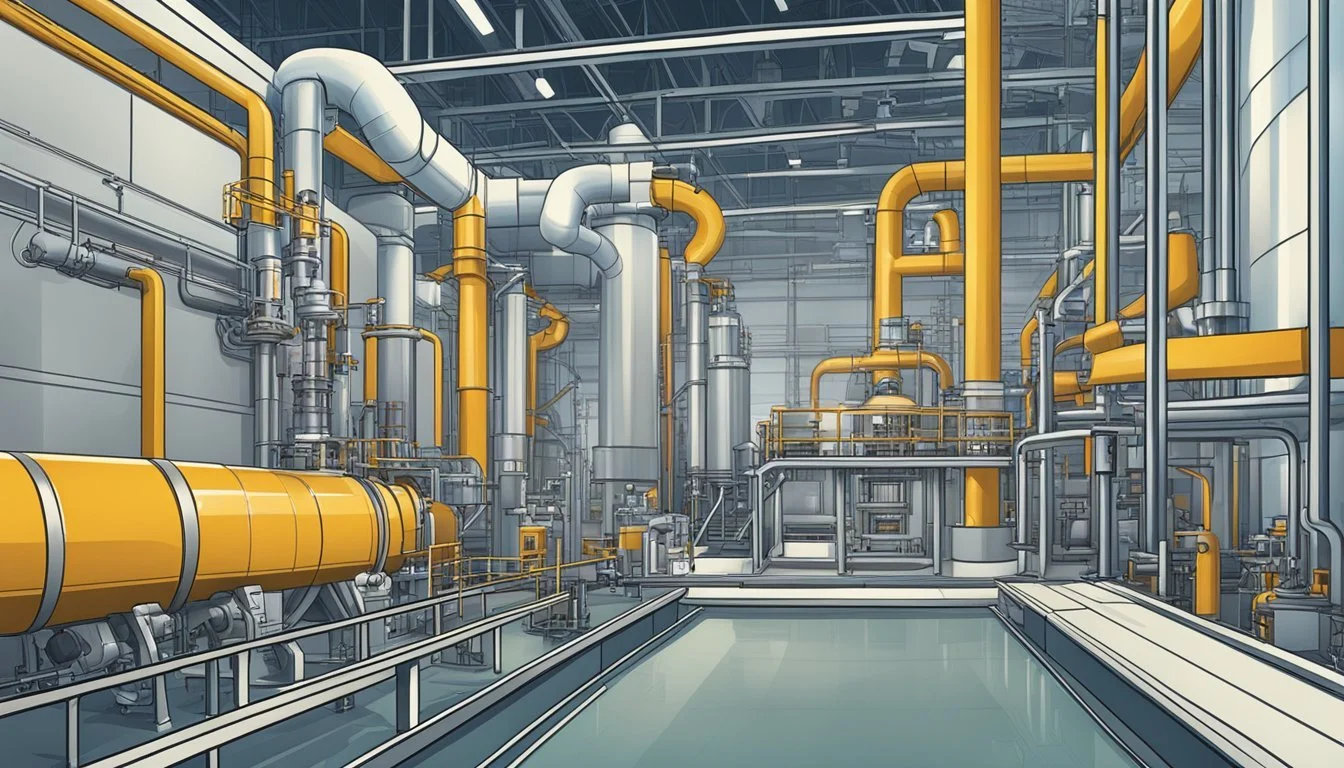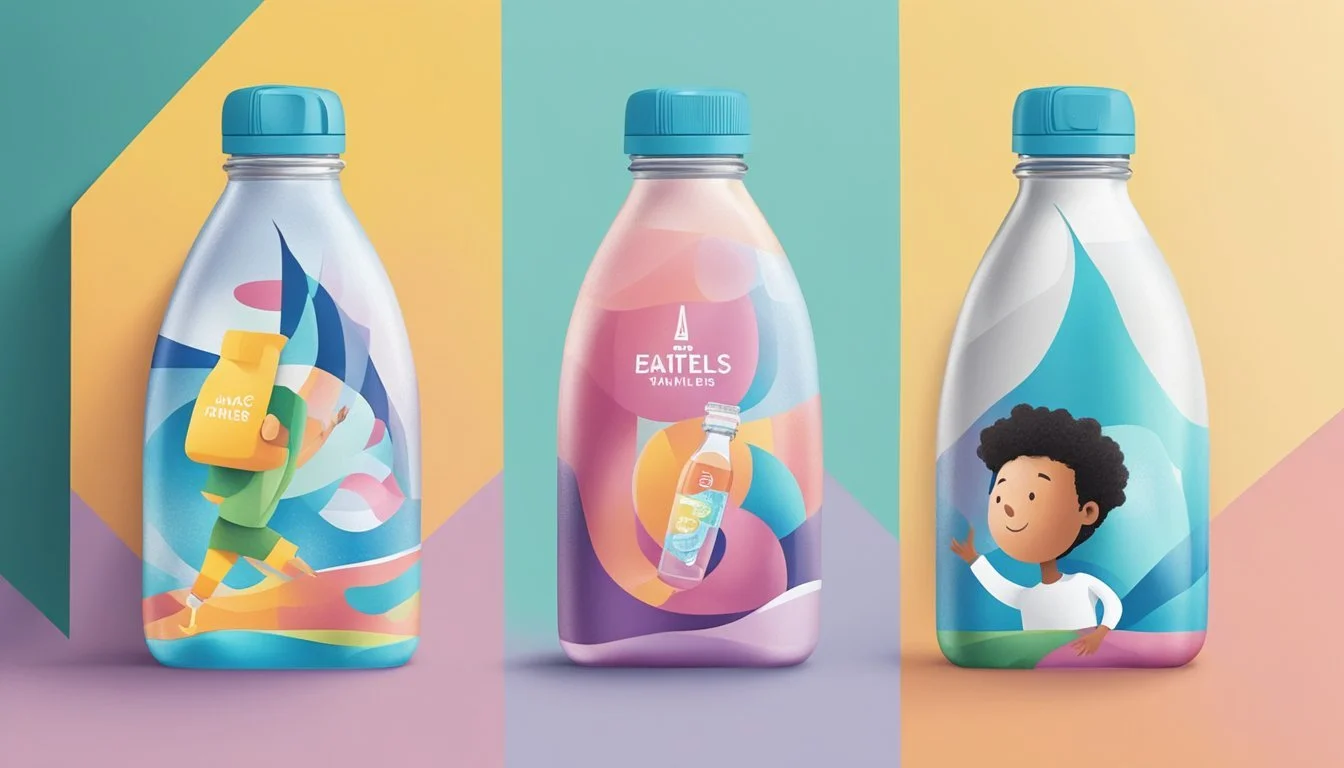Big Chill vs. Weird Water
Comparing Bottled Water Brands
Choosing the right bottled water can be a surprisingly complex decision, but two popular contenders in the market are Big Chill and Weird Water. Each boasts unique qualities that set them apart. Big Chill offers a clean, crisp taste that appeals to those who prefer a classic, refreshing water experience, whereas Weird Water stands out with its distinctive mineral content and slightly sweet aftertaste.
Big Chill has gained a strong reputation for its reliability and purity. Sourced from high-quality springs, it provides a light, velvety texture that appeals to many. On the other hand, Weird Water is often praised for its unique flavor profile, attributed to its volcanic origins, which infuse the water with natural minerals.
When deciding between the two, it’s essential to consider what you value most in bottled water. For a straightforward, refreshing drink, Big Chill is an excellent choice. Meanwhile, those looking for an intriguing taste and added mineral benefits may find Weird Water more appealing.
Untangling the Water Web: Understanding Bottled Water
Bottled water remains a popular choice for many due to perceived benefits, including taste, convenience, and safety. Understanding the journey of bottled water from source to shelf, its mineral content and benefits, and the regulations ensuring its quality can help consumers make informed decisions.
The Lifecycle of Bottled Water: From Source to Shelf
The lifecycle of bottled water begins with sourcing. Bottled water can come from natural springs, municipal sources, or wells.
Natural spring water is collected directly from underground sources and often bottled at the source. Municipal water, on the other hand, is processed and purified before being bottled. Purification methods may include distillation, reverse osmosis, or carbon filtration.
Once processed, bottled water undergoes rigorous testing. The final stage involves bottling in sterilized, BPA-free containers before distribution to retailers. Each step ensures the safety and quality of the product consumers purchase.
Mineral Content and Health Benefits: What's Inside Matters
The mineral content of bottled water varies based on its source. Natural spring and mineral waters often contain beneficial minerals like calcium, magnesium, and potassium.
These minerals can contribute to overall health by supporting bone health, muscle function, and electrolyte balance. Purified water may have fewer minerals, as it is processed to remove impurities and contaminants.
Consumers seeking specific health benefits should pay attention to the mineral content listed on the bottle's label. This helps them choose the type of water that best meets their dietary needs.
Safety Standards and Regulatory Bodies: Ensuring Quality
Bottled water is regulated by the FDA in the United States. The FDA sets stringent safety and quality standards that bottled water must meet. This includes limits on contaminants, regular testing, and proper labeling.
The EPA regulates municipal water sources, ensuring that public water supplies are safe for consumption. However, bottled water undergoes additional purification processes.
Independent organizations, such as NSF International, may also certify bottled water products, providing additional assurance of safety and quality. These measures ensure that bottled water remains a trusted option for consumers seeking a reliable source of drinking water.
The Big Chill: Brands at a Glance
In exploring bottled water brands, it's essential to highlight those leading the market, those suitable for everyday hydration, and the emerging options worth considering.
Premium Picks: Fiji, Evian, and Voss
Fiji water stands out for its distinctive silica content, giving it a smooth texture. Sourced from an artesian aquifer in Viti Levu, Fiji, this brand is well-regarded for its pristine and soft taste.
Evian originates from the French Alps, contributing to its natural mineral composition. With a balanced pH and minerals like calcium and magnesium, Evian is favored for its clean, refreshing profile.
Voss, known for its sleek bottles, is sourced from an artesian well in Norway. Its crisp and pure taste makes it a luxury option. Voss is also available in both still and sparkling variants, catering to diverse preferences.
Daily Hydration Partners: Dasani, Aquafina, and Pure Life
Dasani from The Coca-Cola Company is widely accessible and affordable. It's filtered through a process involving reverse osmosis and then enhanced with a blend of minerals for taste.
Aquafina, produced by PepsiCo, also uses reverse osmosis for purification. The brand is known for its clean and consistent taste, making it a staple in many households.
Pure Life, a Nestlé brand, emphasizes accessibility and family hydration. It undergoes a 12-step filtration process and is frequently enriched with a mix of minerals, resulting in a crisp and refreshing experience suitable for daily consumption.
Emerging Contenders: Icelandic Glacial and Core Hydration
Icelandic Glacial is renowned for its naturally alkaline water, sourced from the Ölfus Spring in Iceland. The water is filtered through volcanic rock, contributing to its pure and crisp taste. Eco-conscious consumers might appreciate its carbon-neutral certification.
Core Hydration highlights its perfectly balanced pH of 7.4, which matches the body's pH level, promoting effective hydration. It's designed to offer a clean and smooth taste, packaged in ergonomic bottles for convenience.
These emerging brands differentiate themselves with unique sourcing and health-focused benefits, appealing to a growing audience in the bottled water market.
Weird Water: Innovative Water Types and Taste Profiles
Innovative bottled waters offer unique features that aim to improve hydration, environmental impact, and taste. This exploration highlights notable options like Smartwater, Essentia, Boxed Water, Ethos Water, Acqua Panna, and Fiji for their distinctive attributes.
Elevating Hydration: Smartwater and Essentia
Smartwater and Essentia stand out for their enhanced hydration properties. Smartwater, vapor-distilled for purity, includes electrolytes for taste. It has a clean, crisp flavor with no aftertaste, making it popular among those looking for a pure hydration experience.
Essentia boasts an alkaline pH of 9.5, achieved through a proprietary ionization process. This makes it attractive to individuals seeking water that may help balance body acidity. It has a smooth taste, often described as more refreshing than standard bottled water. Both brands emphasize purity and enhanced hydration.
Eco-Conscious Choices: Boxed Water and Ethos Water
Boxed Water and Ethos Water appeal to the eco-conscious consumer. Boxed Water uses renewable, biodegradable packaging made from paper sourced from sustainably managed forests. It has a fresh, clean taste, free from the plastic flavors sometimes found in traditional bottled waters.
Ethos Water, owned by Starbucks, contributes to water access projects in developing countries with every purchase. Packaged in traditional bottles, it aims for minimal environmental impact through various sustainable practices. The taste is typically described as crisp and refreshing, consistent with other purified drinking waters.
Artesian Sources: Acqua Panna and Fiji
Acqua Panna and Fiji are renowned for their artesian sources, contributing to their unique taste profiles. Acqua Panna, sourced from the springs in Tuscany, Italy, offers a smooth, slightly sweet flavor prized by chefs and wine aficionados. Its low mineral content provides a delicate taste that complements fine dining.
Fiji Water, originating from an artesian aquifer in Fiji, is known for its soft, smooth taste with a subtle mineral profile. The naturally occurring minerals like silica give it a distinctive mouthfeel and a taste that’s been described as “untouched” and exceptionally pure. Both waters offer a premium drinking experience rooted in their pristine sources.
Taste Versus Purity: Filtration and Enhancement Processes
Water's flavor and cleanliness depend heavily on the filtration and enhancement processes. Different techniques, including reverse osmosis and carbon filtering, focus on removing contaminants while others like adding electrolytes, enhance its taste and nutritional profile.
Revealing Filtration Methods: Reverse Osmosis and Carbon Filtering
Reverse osmosis is a powerful filtration method that uses a semi-permeable membrane to remove impurities. By forcing water through this membrane, it eliminates dissolved salts, bacteria, and viruses, resulting in nearly pure water.
In contrast, carbon filtering uses activated carbon to trap contaminants like chlorine and organic compounds. It also reduces unpleasant tastes and odors, although it doesn’t remove dissolved inorganic substances like heavy metals as effectively as reverse osmosis.
Understanding these methods sheds light on how water's purity and taste are affected. Reverse osmosis is thorough in providing clean water, while carbon filtering is efficient in improving taste and reducing specific chemicals.
Enhancing Water: Electrolytes and pH Levels
Electrolytes, such as sodium, potassium, and magnesium, are often added to bottled water to improve taste and provide health benefits. These minerals can enhance hydration and muscle function, making the water more appealing and beneficial for active individuals.
The pH level of water can also be modified to make it alkaline. Alkaline water is believed to help balance acidity in the body, although scientific support for these health claims varies.
By adding these elements, manufacturers cater to consumers looking for not just hydration but also enhanced performance and taste. Electrolytes provide both functional and sensory improvements, while altered pH levels aim at offering potential health benefits.
Pricing the Pour: Cost Analysis of Bottled Water
Exploring the cost differences between brands helps consumers make informed choices. This analysis will compare price factors like brand and convenience and consider the value of bottled water.
The Economics of Bottled Water: Understanding Price Factors
The price of bottled water varies significantly based on brand, packaging, and purchase location. For instance, a gallon of single-serve bottled water can cost around $9.47. In contrast, tap water is only about $0.005 per gallon.
Packaging plays a key role. Smaller, single-serve bottles often carry a higher price per unit than larger, multi-serving containers. The convenience of smaller bottles appeals to many consumers despite the higher per-ounce cost.
Where consumers purchase bottled water also impacts the price. Bottled water from grocery stores might be priced differently than in vending machines or convenience stores. Premium brands like Fiji or Evian are typically more expensive due to their exotic sources and branding.
Affordability Versus Premium Experience: Value Considerations
While basic bottled water offers hydration, premium brands promise a superior experience. Standard bottled water costs around $1.50 for a 16 oz bottle, adding up to substantial yearly expenses for regular buyers.
Premium water brands highlight unique selling points, such as sourcing from natural springs or including added minerals. This can justify higher prices; for example, Evian or Fiji water.
Consumers must weigh convenience and premium experience against cost. For some, the taste and perceived health benefits of higher-priced brands outweigh the expense, while others prefer more affordable options like tap or filtered water. Cost-conscious consumers often find filtering tap water a cost-effective alternative.
Packaging and Environmental Considerations
Packaging plays a significant role in determining the environmental impact of bottled water. Factors such as material, recyclability, and chemical safety are crucial in evaluating which option is more eco-friendly.
Plastic Predicament: BPA and Plastic Bottles
Plastic bottles are commonly made from PET (polyethylene terephthalate). While PET bottles are lightweight and shatter-resistant, they pose significant environmental challenges. PET plastic bottled water packaging makes up only 0.92 percent of all plastic production in the United States. However, the carbon footprint is considerable. For every 50 ounces of bottled water produced, between 1.6 and 22 ounces of CO2 are released into the atmosphere.
BPA (bisphenol A) is another concern. While many water brands, including Boxed Water and Just Water, claim to be BPA-free, the risk of chemical leaching from other plastics exists. Consuming water from plastic bottles also contributes to microplastic pollution, as these bottles break down into tiny plastic particles that can enter water systems and food chains.
Glass and Beyond: Searching for Sustainable Solutions
Glass bottles offer a more sustainable alternative to plastic. They are fully recyclable and do not release harmful chemicals. Additionally, glass does not contribute to microplastic pollution. The production of glass bottles, however, requires more energy compared to plastic, influencing their overall carbon footprint. Yet, their long-term recyclability often offsets the initial energy costs.
Other eco-friendly innovations include boxed water and bio-plastic alternatives. Boxed Water utilizes a mix of paper, aluminum, and plastic film, aiming to reduce environmental impact. Just Water focuses on using a bio-plastic cap and predominantly paper-based packaging. These alternatives present a compromise, reducing the use of traditional plastics while still providing a functional packaging solution.
Hydration on the Move: Accessibility and Convenience
Choosing between Big Chill and Weird Water for on-the-go hydration involves considering factors such as how easily available the products are and how they can be used in everyday settings. Accessibility, convenience, and the ability to reuse bottles significantly influence their practicality.
On-The-Go Drinkability: Bottled Water in Daily Life
Bottled water presents a practical solution for safe drinking water during daily activities. Grocery stores, vending machines, and kiosks offer a wide variety of options, making it a convenient choice. Whether commuting, exercising, or running errands, carrying a bottle ensures access to hydration without needing to locate a water source.
Both Big Chill and Weird Water are commonly available in grocery stores and convenience shops. That accessibility supports their role as reliable hydration sources during busy schedules. The easily portable nature of bottled water also makes it a preferred choice over alternatives that might require preparation or specialized equipment.
Reusable and Refillable: Tackling the Convenience Quandary
Reusable bottles offer an eco-friendly alternative. Although they require initial investment, they reduce the long-term cost and environmental impact compared to single-use bottles. They can be refilled with tap water or filtered water, providing safe drinking water without the recurring expense of purchasing bottled water.
Consumers who prioritize sustainability often prefer reusable bottles. They tackle the convenience of always having a drinking vessel on hand, whether during travel or at a gym. This adaptability positions reusable bottles as a practical solution alongside bottled water, which may be more disposable but less environmentally friendly.
Combining the convenience of Big Chill or Weird Water bottled water with the sustainability of reusable bottles can cater to diverse needs, making the choice between single-use and reusable options less stark.
Health and Hydration: Separating Myth from Fact
Proper hydration is crucial for maintaining health, but misconceptions abound regarding how much water we need and the differences between bottled and tap water.
The Quest for Proper Hydration: How Much Water Do We Really Need?
Hydration requirements vary widely. Contrary to the popular belief that everyone should drink eight glasses a day, individual needs depend on factors such as age, activity level, diet, climate, and health conditions. For example, those in hot, humid climates or highly active individuals may need more water.
Factors Influencing Hydration Needs:
Age and Gender: Younger people and males often require more water.
Activity Level: Athletes may need greater fluid intake.
Diet: High-protein or salty diets increase water requirements.
Climate: Hot environments boost hydration needs.
Thus, it's essential to listen to one's body and drink when thirsty, while considering these variables.
Debunking Myths: Bottled Water Versus Tap Water
Many believe bottled water is inherently superior to tap water. Both can be safe and hydrating, but there are distinctions and considerations for each.
Tap Water:
Accessibility: Easily available and low-cost.
Regulations: Subject to strict quality controls by the Environmental Protection Agency (EPA) in the U.S.
Potential Risks: May contain contaminants like lead if pipes are outdated.
Bottled Water:
Convenience: Portable and readily available.
Perception: Often perceived as cleaner or purer.
Environmental Impact: Plastic waste and carbon footprint from production and transport.
Filtered water, whether through home filters or commercial products, can offer a middle ground by reducing contaminants while using tap water. Choosing between bottled and tap water often depends on personal preference, access, and specific health considerations.
The Future of Water Consumption
The landscape of water consumption is evolving with advancements in water treatment and the emergence of curated water experiences. These changes are reshaping how people access and perceive bottled water.
Innovations in Water Treatment and Accessibility
Recent innovations focus on enhancing the purification process and improving accessibility. Companies are investing in advanced filtration technologies, ensuring the removal of contaminants while preserving essential minerals.
Nanotechnology is being utilized to filter out even the smallest impurities.
Smart water dispensers integrate IoT to provide real-time quality monitoring.
Efficient and sustainable water treatment plants are also a priority. These plants aim to reduce environmental impact by using renewable energy sources and optimizing the purification process.
Local governments are collaborating with tech firms to deploy solutions that increase access to safe drinking water in underserved regions.
The Water Sommelier Movement: Curated Water Experiences
The water sommelier movement is gaining traction. Water sommeliers curate high-end water experiences, educating consumers on the nuances of different sources and treatment methods.
Interest in premium bottled water is rising, driven by those who seek unique taste profiles and health benefits.
Attribute Description TDS (Total Dissolved Solids) Measures mineral content influencing taste Source Origin of the water, whether spring, glacier, or mineral
Water tastings and educational events are becoming popular. These sessions often highlight the distinct properties of waters from various regions, helping consumers make informed choices.
Such curated experiences reflect a shift toward appreciating water not just as a necessity but as a sophisticated choice, similar to wine or coffee.








